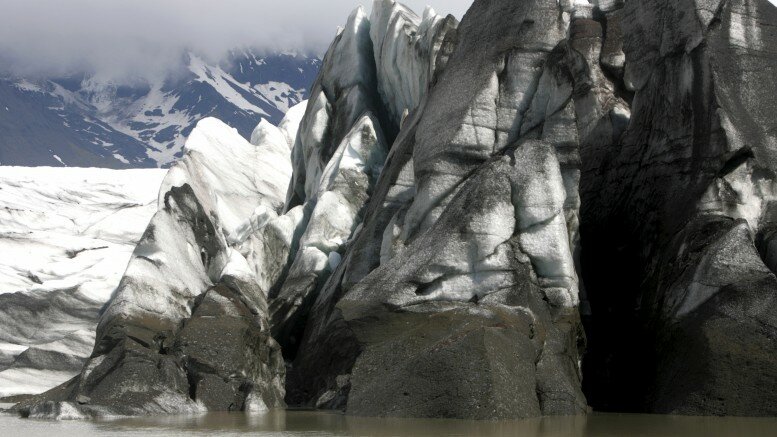Norway’s glaciers may melt away completely by 2100
Glaciers shrink across the globe due to climate change. Norwegian giant glaciers such as Jostedalsbreen and Folgefonna might be all but disappeared within 80 years.
2018 was a very bad year for the Norwegian glaciers. There was no mass surplus on any of those we measure, senior engineer of the Norwegian Water Resources and Energy Directorate (NVE), Hallgeir Elvehøy, states.
The glaciers retreated 33 metres on average in the course of last year alone, when a lot of heat records were measured.
This means that 2018 was one of the years with the greatest decline since the measurements began.
“If it hadn’t been a little cooler in August, it would probably end up with a record even in that regard,” Elvehøy tells NTB.
Retreats
The melting last year joins in a trend that began in Norway around the turn of the millennium. Since then, Norwegian glaciers have steadily retreated.
Several large glaciers have retreaded about half a kilometre during this period. One of these is Nigardsbreen – a tongue of Jostedalsbreen. The Jostedal Glacier is the largest on the European mainland.
Nigardsbreen has retreated 456 metres in 20 years, Elvehøy informs.
The development in Norway is, in turn, part of a global trend. Glaciers melt and retreat worldwide, from the Arctic to the Alps, in the Andes and the Himalayas to the western parts of Antarctica.
Global warming
The worldwide withdrawal of glaciers has been going on ever since the 19th century. In the first period, the main reason may have been natural changes in the Earth’s climate.
The main cause is currently climate change by humans, researchers assert. 69 per cent of the loss of ice from the world’s mountain glaciers between 1991 and 2010 is due to global warming caused by human activity, according to a study published in the prestigious Science Journal.
“If emissions of greenhouse gases continue at the current rate, it is still a question of increasing temperature and increasingly smaller glaciers,” they believe.
470 square kilometres
Jostedalsbreen in Sogn & Fjordane covers an area of more than 470 square kilometres, and the ice is over 600 metres tall in places. Even this colossus can be just about disappeared 80 years into the future.
That is the conclusion of researchers – who have tried to predict the development of the glacier – if climate emissions continue to increase.
“The models suggest that there will be very little ice left in southern Norway in the year 2100,” Elvehøy predicts.
If so, there will only be leftovers remaining of Folgefonna in Hardanger and hundreds of smaller Norwegian glaciers. Elvehøy believes that Svartisen in Nordland will suffer the same fate.
May lose its drinking water
On Svalbard, glaciers are even larger than on the Norwegian mainland. The development here is the same, and satellite measurements show that the glaciers shrink across the entire archipelago.
Two smaller glaciers at Ny-Ålesund have been measured since the ’60s.
“They have had two years where they grew a little bit. Otherwise, they have declined in size,” Researcher at the Norwegian Polar Institute, Jack Kohler, tells NTB.
In Asia and South America, hundreds of millions of people are at risk of suffering poorer access to drinking water as the glaciers of the Himalayas and Andean mountains become smaller.
Two-thirds of the Himalayan glaciers can, for instance, disappear before the year 2100, according to a recent report.
At the same time, people in coastal areas all over the world are affected when meltwater from the glaciers causes the oceans to rise. The sea level rise depends, among other factors, on the development of Greenland, where enormous ice masses seem to melt ever faster.
© NTB Scanpix / #Norway Today






